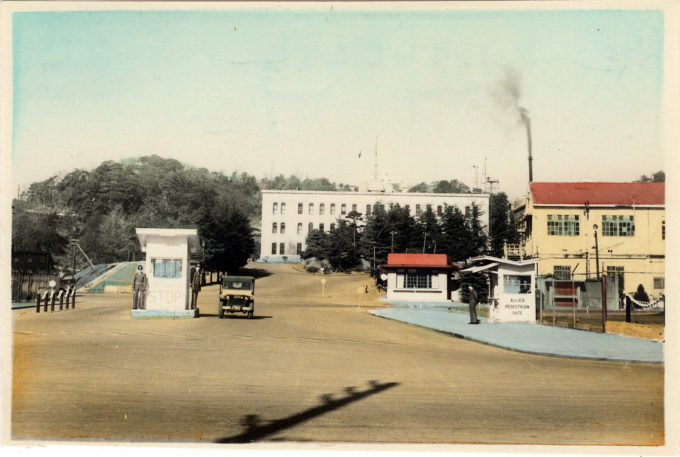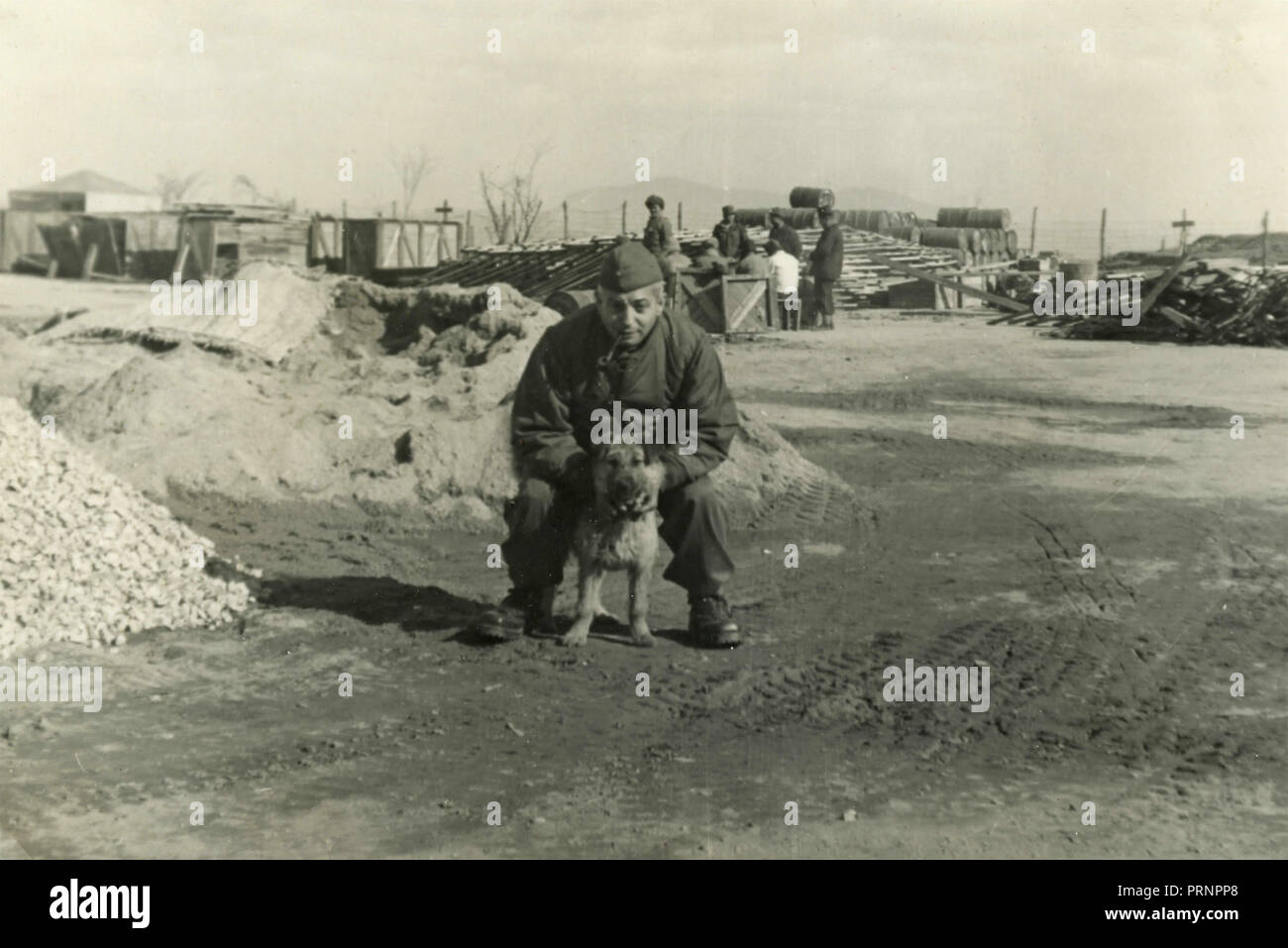

The 1950s were a time of gradual recovery for the nation. In August of that year, the present 23 special-ward system began in Tokyo Metropolis. In May 1947 the new Constitution of Japan and the Local Autonomy Law took effect, and Seiichiro Yasui was elected the first Governor of Tokyo by popular vote under the new system. Much of Tokyo had been laid waste by the bombings and by October 1945 the population had fallen to 3.49 million, half its level in 1940. The war came to an end on September 2, 1945, when the Japanese government and military representatives signed the Instrument of Surrender. The heaviest air raid was on March 10, 1945, in which there was great loss of life and material damage. In the final phase of the war, Tokyo was bombed 102 times. The metropolitan administrative system was thus established and a governor was appointed. The dual administrative system of Tokyo-fu (prefecture) and Tokyo-shi (city) was abolished for war-time efficiency, and the prefecture and city were merged to form the Metropolis of Tokyo in 1943. However, the Pacific War, which broke out in 1941, had a great impact on Tokyo. By 1935 the resident population of Tokyo had grown to 6.36 million, comparable to the populations of New York and London. In 1931 Tokyo Airport was completed at Haneda, and in 1941 the Port of Tokyo was opened. Even so, Japan’s first subway line was opened between Asakusa and Ueno in 1927, and in 1928 the 16th general elections for the House of Representatives of the Diet were held for the first time following the enactment of universal male suffrage. After the earthquake a city reconstruction plan was formulated, but because the projected costs exceeded the national budget only a small part of it was realized.īeginning shortly after the Great Kanto Earthquake, the Showa era (1926-1989) started in a mood of gloom. Over 140,000 people were reported dead or missing, and 300,000 houses were destroyed.
The fires caused by the earthquake burned the city center to the ground. In September 1923 Tokyo was devastated by the Great Kanto Earthquake. Performing arts such as theater and opera thrived. Educational standards improved, and the number of girls going on to study at higher schools increased. With the promulgation of the Constitution of the Empire of Japan in 1889 Japan established the political system of a modern state.ĭuring the Taisho era (1912-1926), the number of people working in cities increased, and a growing proportion of citizens began to lead consumer lifestyles. In 1885 the cabinet system of government was adopted and Ito Hirobumi became Japan’s first prime minister. In 1882 Japan’s first zoological gardens were opened in Ueno. Western hairstyles replaced the traditional topknot worn by men, and bowler hats, high collars, and bustled skirts were the height of fashion. In 1869 Japan’s first telecommunications line was opened between Tokyo and Yokohama, and the first steam locomotive started running in 1872 from Shimbashi to Yokohama.

Buildings made of stone and bricks were built on the sites of the mansions of feudal lords, and the major roads were paved with round stones. Thus, Tokyo became the capital of Japan.ĭuring the Meiji era (1868-1912), Japan began its avid assimilation of Western civilization. The Emperor moved to Edo, which was renamed Tokyo. The Edo Period lasted for nearly 260 years until the Meiji Restoration in 1868, when the Tokugawa Shogunate ended and imperial rule was restored. Throughout this time, the Emperor resided in Kyoto, which was the formal capital of the nation. As the center of politics and culture in Japan, Edo grew into a huge city with a population of over a million by the mid-eighteenth century. Originally named Edo, the city started to flourish after Tokugawa Ieyasu established the Tokugawa Shogunate here in 1603. The history of the city of Tokyo stretches back some 400 years. TOKYO’S HISTORY, GEOGRAPHY, AND POPULATION History of Tokyo


 0 kommentar(er)
0 kommentar(er)
